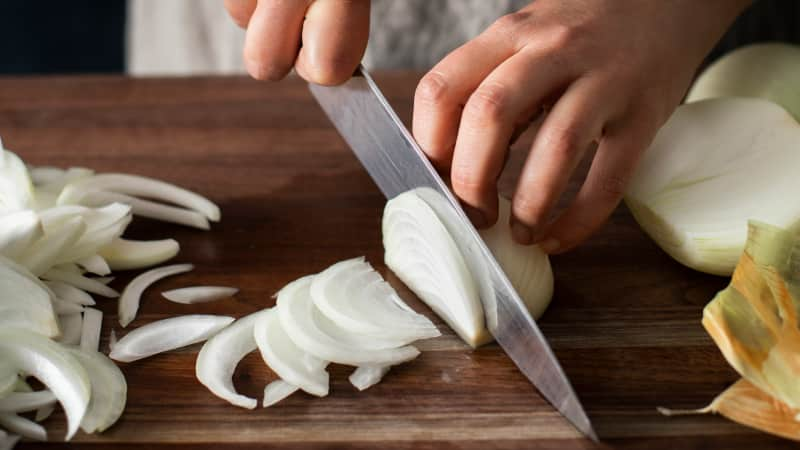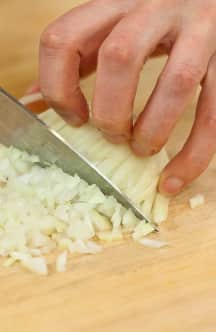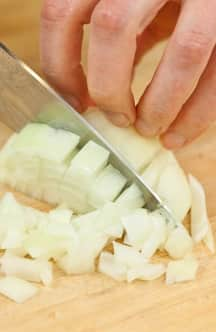Sniff an intact onion, and you won’t smell anything. But slice that same onion, and it comes to life, unleashing a ripe, complex pungency that plays an integral role in just about every cuisine around the world.
How Strong Does an Onion Taste? Depends on How You Cut It.
Published July 7, 2022.

That transformative nature, and tremendous range of flavor and aroma, is what makes onions so invaluable. And as cooks, we have the power to control their flavor—starting with the knife work. Depending on how—and how much—you cut them, onions can range from the raw bite in a salad or sandwich to the imperceptible but deeply aromatic depth in countless sautes, stir-fries, curries, and braises.
Sign up for the Cook's Insider newsletter
The latest recipes, tips, and tricks, plus behind-the-scenes stories from the Cook's Illustrated team.
How Onion Flavor Works
At the root of onion flavor are enzymes called onion alliinase and LF synthase, which are released the moment the vegetable’s cells are damaged and jump-start a pivotal chemical reaction. The enzymes act on a sulfur-containing molecule called isoalliin, converting it to harsh-tasting molecules called thiosulfinates. These thiosulfinates immediately start to change into a variety of other, often more mellow-tasting compounds, all of which in tandem are responsible for onion flavor.
More Cutting = Stronger Flavor
Manipulating onion flavor is all about controlling the creation and subsequent evolution of isoalliin. The more you break down onion cells by chopping, the more isoalliin is produced. Minced onion tastes stronger than chopped onion, which tastes stronger than sliced.


Minced onion (left) tastes stronger than chopped onion because the former's cells are more broken down and have released more sulfur-rich isoalliin.
With the Grain = Milder Flavor; Against the Grain = Stronger Flavor
Even the way in which you cut the onion affects its pungency. Slicing pole to pole (with the grain) ruptures fewer cells than slicing parallel to the equator (against the grain), and thus produces fewer thiosulfinates.
Onion Flavor at Work
Want to get a sense for how impactful the cutting method can be? Cook your way through these recipes.






